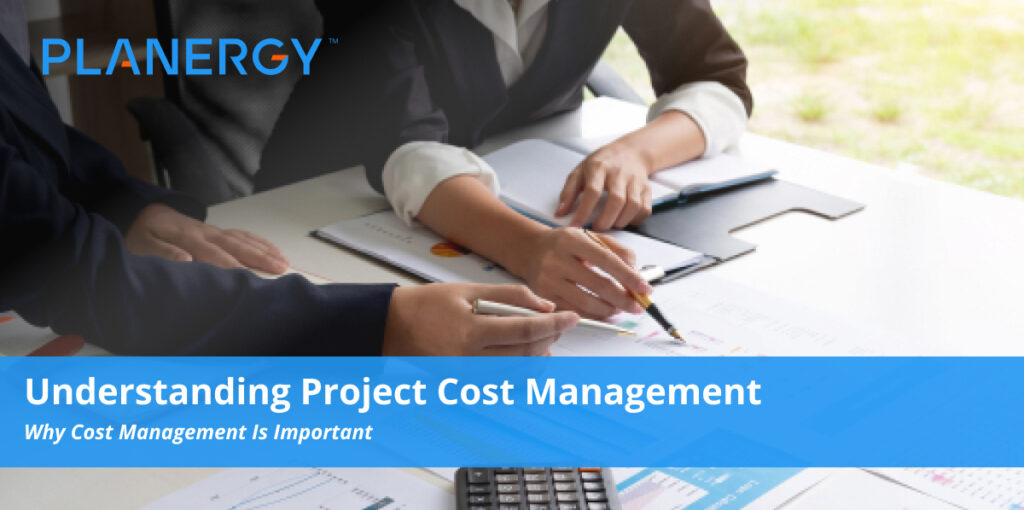Project cost management is important to keeping the project on track in terms of both the timeline and the budget.
Using project cost management sets a baseline for your project cost. It helps you govern decisions and the directions to take when you are managing costs throughout the course of your project.
This helps keep your project on track without going over budget.
Without project cost management, your organization could lose money as costs outweigh profits.
You may also incorrectly invoice your customers. In the end, you’ll end up with a sloppy budget and the inability to be aware of when you’re overspending.
As a project manager, it is your responsibility to ensure the project has everything it needs to be completed on time, and on budget.
Project completion within the constraints of the budget isn’t always possible, but it should always be the goal.
The Process of Managing Project Costs
Step One: Plan Your Resources
In the project planning phase, you need to take a look at the required resources you will need to complete the project to create your preliminary project estimates.
Use a work breakdown structure (WBS) and historical information of similar projects to help you define the physical resources you need.
Using this approach to plan cost management is known as analogous estimating, but only works if you have historical data of similar projects to compare it to.
Consider the required time, material, equipment and labor. After you have determined all the resources and quantities you need, you can determine the associated costs and build an accurate budget.
Step Two: Estimate Project Costs
With a list of everything you will need to complete the project in front of you, you can break it down into a list of tasks that need to be done.
Estimate how long each task will take. Then, calculate the task cost based on the hourly rate of each team member along with the material costs and all units of measurement.
As a bonus, you can use this task break down to create a project schedule. This will also help you know when and if you need to adjust your staffing levels to account for getting the project done on time.
This may mean bringing in temporary help or allowing employees on the project team to get overtime, which will obviously affect your labor costs.
While you’re estimating cost you also want to consider travel, equipment, and space expenses. You will also have other fixed and miscellaneous costs depending on the project.
You’ll note those again at the task level. It’s also important to consider that some project costs are easier to estimate than others.
Things like consulting fees, raw materials, travel, software, and labor are easier to chart and plan for then cost that may change as to work to estimate costs.
Your more difficult costs include indirect costs – things such as your general administrative costs, office equipment, office space and company Insurance.
To help make it easier to see what you’re spending and where, you can break it down into the types of cost – direct and indirect, and then further categorize your spend as desired.
Remember, as more information becomes available throughout the course of your project you can update and refine your estimates.
Eventually, you’ll get a detailed unit cost estimate with high accuracy and you can cover the remaining uncertainties by building a buffer into your budget.
Step Three: Develop Project Budget
Once you have an idea of how much everything will cost, you can develop a budget for the entire project.
This will help keep you on track so you know how much profit you have at the end of the project and how much you will need to charge your clients to complete the project.
The more detailed the budget is, the easier it will be to spot any cost variance. Cost budgeting should be done with a range of costs until vendors are chosen and more concrete costs are available.
Your budget will provide an overview of your periodic project costs as well as the total project cost.
The cost estimates define the cost of each work activity whereas the budget will allocate cost over time as the costs occur.
Your cost baseline is an approved time-phased budget that is used as a starting point to measure your actual performance progress.
Step Four: Choose Cost Tracking Method
You’ll also want to choose a method for tracking your costs whether you choose to use a spreadsheet that you update as purchases are made or you opt to use software with real-time data tracking.
For smaller organizations and projects, it may seem like a spreadsheet is the better option.
However, with a spreadsheet there is plenty of room for error, especially if more than one person is making purchases and the spreadsheet is not updated accordingly.
That’s why it is better to use software with real-time Data Tracking so that if one person enters an expense just minutes before another person enters a different expense, the information stays accurate for everyone who has access to the information. This alone can reduce errors and overspending.
Step Five: Control Costs
Once the project is up and running cost management involved cost control. This phase of the process is concerned with measuring any variances from the cost baseline and taking the necessary corrective action to achieve minimum costs.
This is where having an effective and efficient cost tracking method is vital as the procedures used to monitor expenditures and performance against the progress of your project are essential.
Any and all changes to your cost baseline must be recorded and the expected final total cost continuously forecasted.
When actual cost information becomes available, an important part of cost control is to explain the cause of the variance from the cost baseline.
Relying on software can help you to find your cost control procedures, track and approve changes and handle analysis. In addition, you can enhance your reporting and simplify it to make it easier for all stakeholders involved in the project to be up-to-date with its current status.
If an organization lacks proper cost management processes and procedures, they will undoubtedly spend too much money on their projects. When handling projects for clients, this translates to unhappy customers, which is bad for business. It pays to invest in project cost management.
Tips to Help Manage Project Costs
Plan for Inflation
Pricing is not set in stone until you have a contract with a vendor.
Any budget will take inflation into account by allowing for a range of cost so you have flexibility in choosing the vendors you want to work with.
Expect the Unexpected
It may sound silly to account for potential events or even natural disasters but you need to have room in your budget for personal issues, weather events, and other unknowns that could delay your project.
Track in Real-Time
Using software to monitor your budget as you execute the project is essential to managing costs. If you’re looking at data that is not current, you won’t be able to act quickly enough to resolve any issues.
Even though the initial investment in software with real-time data tracking may be difficult for small companies to manage, it is something that will pay for itself and no time and provide a great return on investment.
Respond Quickly
No matter how or when you find a discrepancy in your project cost, it is crucial to act immediately.
The longer you wait to take action, the larger the cost overrun becomes.
Manage Costs for All Projects Regardless of Size
There are some people who believe that smaller projects do not need project cost management.
No matter the size of the project, you’ll want to manage costs. Oftentimes, smaller projects and smaller budgets mean the cost management is even more important because you have to make the most of every dime you’ve got. failing to properly manage costs in the name of a small project makes it much easier to overspend unnecessarily.
And when it comes to large projects, the project plan, time management, and cost control are critically important to keep on track because of the large number of parts and people involved.
The best way to manage project cost is to know your project very well inside and out. Familiarize yourself with the project scope, and follow all Project Management Body of Knowledge (PMBOK) guidelines and recommendations.
This means taking the time to create a work breakdown structure and other important project management documents so that everything is clearly outlined before you begin the cost estimating and budgeting process.
Once you complete your current project, you can take a closer look at your overall cost performance to see how you did with your cost estimation. This will help you learn what action to take when it is time to begin the process again for another project.




